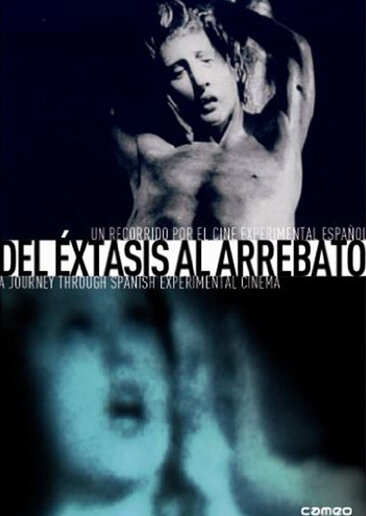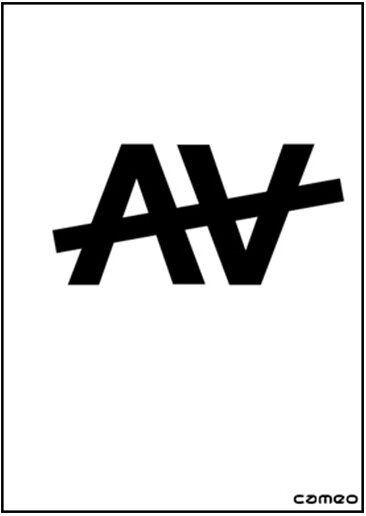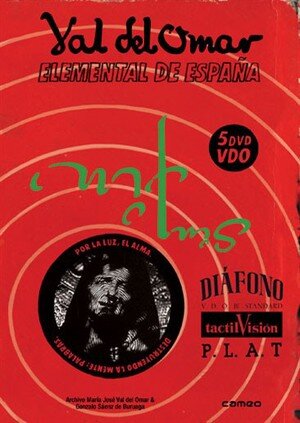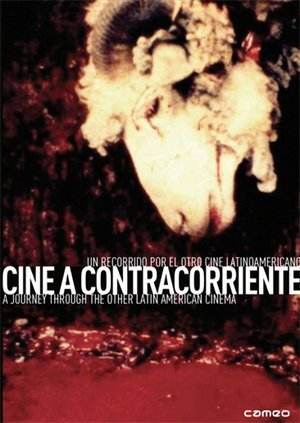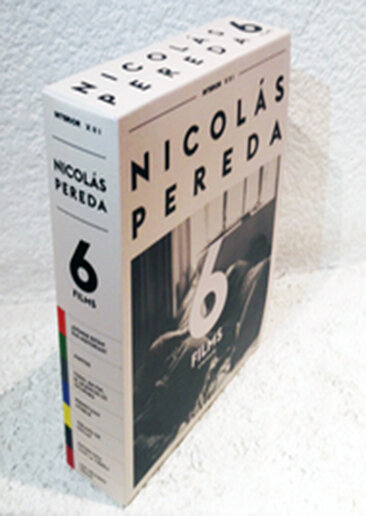GME STREAMLINE PRESENTS CUTTING EDGE EXPERIMENTAL FILMS & VIDEOS FROM SPAIN & LATIN AMERICA NOW AVAILABLE AS DIGITAL SITE LICENSES IN DVD/DSL BUNDLES
/Furthering our presentations of GME Streamline, we now offer digital site licenses as DVD/DSL bundles of films and videos from Spain and Latin America. These releases comprise 3 historical overviews of moving image works from Spain, encompassing experimental cinema (FROM ECSTASY TO RAPTURE), video art (VIDEO ITINERARIES FROM THE SPANISH CONTEXT) and animation (FROM DOODLES TO PIXELS: A JOURNEY THROUGH SPANISH ANIMATION).
In addition, we present digital publications of two under-recognized yet important cinema pioneers, Segundo de Chomón and Val Del Omar. Chomon was a rival of Méliès, and cinema poet Val Del Omar flourished during the Silver Age of Spanish Culture, alongside compatriot and friend Federico Garcia Lorca.
From Latin America, we offer an overview of avant-garde, documentary, animation and experimental films (CINE A CONTRACORRIENTE: A JOURNEY THROUGH OTHER LATIN AMERICAN CINEMA), as well as a retrospective of contemporary films from Mexican born artist Nicolás Pereda.
◊
The 2-DVD collection of FROM ECSTASY TO RAPTURE: A JOURNEY THROUGH SPANISH EXPERIMENTAL CINEMA was designed to accompany the international traveling film exhibition, “From Ecstasy to Rapture: 50 Years of the Other Spanish Cinema.” In this digital publication, curators Andrés Hispano and Antoni Pinent have brought together 31 key films (dating from 1957 to 2005) that showcase works with an obvious experimental drive — films that display a formal, plastic, conceptual and perceptual exploration, that have utilized the cinema as a means of artistic expression (neither commercial nor promotional), that operate outside a conventional narrative. Presented are over 3 hours of films by artists whose passion for the medium demonstrates that experimental cinema has extraordinary manifestations in Spain, despite the adversities it has met in its production, distribution, and until very recently, in being considered part of the artistic discourse.
◊
The 5 DVD compilation APOLOGÍA ANTOLOGÍA: VIDEO ITINERARIES THROUGH THE SPANISH CONTEXT provides the first retrospective review to bring together 40 years of audiovisual creation in Spain. Eighty-five (85) works of video art are included, that date from 1974 to 2014. The organizational themes include Conceptual Art, archival appropriation, political works, the body, and the video medium as an oppositional tool. A booklet accompanies this digital publication, and provides an analysis of each of these thematic and conceptual categories of video art in the Spanish context.
◊
CINE A CONTRACORRIENTE: A JOURNEY THROUGH THE OTHER LATIN AMERICAN CINEMA contains a selection of films that comprise the traveling cinema program "Cinema Against the Grain: Latin America and Spain. Dialogue, Convergence, Divergence Over the Past 80 Years." The contents of this DVD edition presents a premiere selection of 19 avant-garde, documentary, animation and experimental films from all throughout Latin America (including Cuba) that date from 1933 to 2008. Within the complex universe of Latin American cinema, these are fundamental works of art that are barely known by the general public. This DVD publication goes hand in hand with GME’s DVD release of FROM ECSTASY TO RAPTURE: A JOURNEY THROUGH SPANISH EXPERIMENTAL CINEMA. Together they comprise a diptych essential for enthusiasts of less conventional cinema on both sides of the Atlantic.
◊
The 3 disc DVD edition of FROM DOODLES TO PIXELS: A JOURNEY THROUGH SPANISH ANIMATION presents an extraordinary compilation of the best of Spanish animated film. This digital publication includes approximately fifty short films (1909 – 2015), a selection of animated commercials, and the first Spanish animated feature film for adults, STORIES OF LOVE AND CARNAGE (1979), which has been carefully restored for this edition. These films not only reflect the diversity of techniques that make animation an art that knows no boundaries, but also offer a journey through the aesthetic evolution of a country that has lived through times of scarcity and isolation before becoming recognized in the international arena of the art of the animated film. This boxed set includes a 160 page booklet with bilingual texts in Spanish and English, as well as information on each film.
◊
Segundo de Chomón is a key figure in the early years of cinema history, and one whose career has long been overshadowed by his French contemporary, Georges Méliès. The DVD collection SEGUNDO DE CHOMÓN (1903-1912): EL CINE DE LA FANTASIA now presents 31 films by “the Spanish Méliès,” revealing a filmmaker of comparable imagination, yet unique artistry.
Segundo de Chomón is, without a doubt, the most international Spanish filmmaker of the silent era at the same time as cinematic language hinted at its hegemony over other popular forms of entertainment, and which continued until the end of the silent era. Chomón worked continuously in two of European cinema’s most important production houses: Pathé Frères in Paris and Itala Films in Turin. He collaborated actively on some legendary films of the silent era, such as CABIRIA (1914) by Giovanni Pastone, and NAPOLÉON (1927) by Abel Gance. Most significantly, beyond the large-scale productions, his name is associated with a genre that is essential to understanding the history of the cinema of that time: trick films and fairy tales, i.e., those films that invited the spectator into a world of fascination.
This DVD is accompanied with a 111-page tri-lingual book containing an informative essay by historian Joan M. Minguet Batllori entitled “Segundo de Chomón: Beyond The Cinema of Attractions” as well as credits for each film and the participating archives involved in their restoration.
◊
The Deluxe Limited Edition boxed set VAL DEL OMAR: ELEMENTAL DE ESPAÑA is dedicated to the works of the unique solitary inventor-artist José Val del Omar (1904-1982) . He was one of the most significant figures of Spanish avant-garde cinema, a contemporary and comrade of Federico García Lorca, Luis Cernuda, María Zambrano and other figures of the Silver Age of Spanish culture, interrupted by the Civil War, that formed the Generación del 36 (Generation of ’36). He was a poet, musician, inventor and “believer in cinema”, whose desire to realize a cinema beyond the limitations of the screen led him to invent “a panoramic overflow of the image” and the concept of “tactile vision.”
His explorations in the field of electro-acoustics inspired him to develop “Diaphonic sound” which anticipated the structure of surround sound. His extraordinary artistic and technological talent led him to formulate the term P.L.A.T. – representing a totalizing concept of a Picto-Luminic-Audio-Tactile art. He applied these techniques in his masterwork ELEMENTARY TRIPTYCH OF SPAIN. Shot between 1953 and the mid-1960s, this film is without a doubt it is the most ambitious project in Spanish cinema history and one referred to by Amos Vogel in Film as a Subversive Art as “an explosive, cruel work of the deepest passion...nameless terror and anxiety...one of the great unknown works of world cinema.” The triptych is a series of three "elementales" (the name would translate as "elementary"), which Val del Omar proposed as a cinematic genre distinct from the documentary. Parts of the triptych won awards at the Cannes, Bilbao, and Melbourne film festivals in the late '50s and early '60s before disappearing from view for decades.
This digital publication contains numerous other films made by Val Del Omar, between the 1930s and the 1980s. These include several early documentaries that he filmed in rural Spain in the 1930s, together with his home-movie footage of the period.
◊
This boxed set also features a selection of films inspired by Val del Omar. They include Eugeni Bonet's experimental feature THROW YOUR WATCH TO THE WATER (2004), which employs Val del Omar's spectacular late color footage, forming a meditation on time and the landscape of Andalusia, as well as VAL DEL OMAR LABORATORY, a 2010 video made by Javier Viver that documents Val del Omar's technological innovations with extensive footage filmed in his still-existing workshop.
The collected works of José Val del Omar have been fully remastered for this important digital publication. Extras include numerous photos and essays by Omar that complement his moving image work. Also included is a 44 page bilingual printed booklet, in Spanish and English, with an introductory article by Gonzalo Sáenz de Buruaga, detailed credits for each of the films, and comments from the contributing filmmakers.
◊
One of the major new voices in contemporary Latin American and world cinema, the young Mexican-Canadian filmmaker Nicolás Pereda (b. 1982) has emerged from seemingly out of nowhere to be feted with career retrospectives, festival screenings, and glowing critical praise. The DVD boxed set entitled NICOLÁS PEREDA brings together his first six feature films made between 2007 and 2012, as well as his short film INTERVIEW WITH THE EARTH (2009).
Pereda’s films are resolutely Mexican in focus and almost exclusively deal with stories drawn directly from the everyday lives and worlds of their working-class characters. Pereda seems most interested in using cinema to evoke a physical sense of place – in this case, modern day Mexico. As the filmmaker has stated, “My concern is to understand and ultimately to evoke the experience of the everyday, and to convey through film – albeit a visual medium – a physical and intangible sense of feelings, place, and culture.”
Pereda’s microscopic view of seemingly insignificant lives of young people, alternating between city and country, with several actors (especially Teresa Sanchez and Gabino Rodriguez) and even characters (mother and son) reappearing time after time, unfolds with a strange, caustic beauty all its own. The careful, often enigmatic minimalism embraced by Pereda’s films – through fractured, elliptical narratives, his preference for extended shot sequences, and carefully modulated performances – links this director to his contemporary cinematic artists.
Pereda has been likened to other post-modern auteurists Apichatpong Weerasethakul (Thailand) and Jia Zhangke (China), who both utilize long scenes shot with a mostly stationary camera. His work has also been compared to Pedro Costa (Portugal) and Lisandro Alonso (Argentina) for his attention to setting and atmosphere, and to Tsai Ming-liang (Malaysia) and Aki Kaürismaki (Finland) for the deadpan humor.
Pereda also labors in a similar cinematic space as Errol Morris and Werner Herzog, in his intertwining elements of narrative and documentary cinema. For Pereda, his objective is to radically confuse and reinvigorate the traditional categories of fiction and nonfiction, between what is scripted and what is the truth. Pereda frequently ruptures the narrative by such techniques as reverting to documentary-style interviews with characters speaking to the camera (or is it the actors portraying them?), staged re-enactments of key moment in the story, scenes repeating themselves with slight variations, backstories changing radically, one major actor replaced with another midstream, and the crew wandering through the set. Pereda creates a totally unique world onscreen that blends fiction, fact, and experimental imagery and tropes – whether within an individual shot, throughout a single film, or across his entire oeuvre, all within the confines of his exploration of the human condition.


